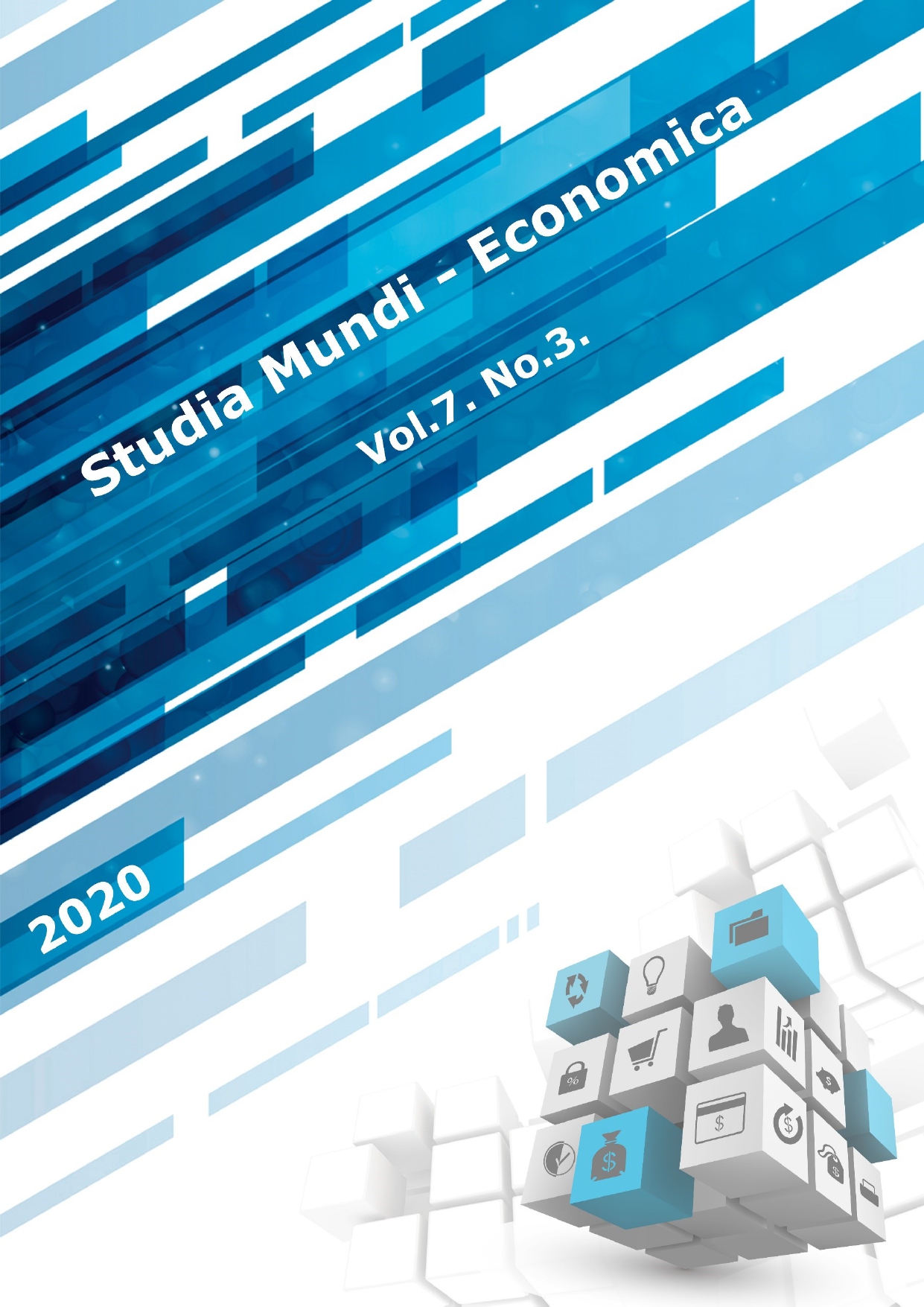Analysis of short supply chain and the chance of a new sales system in the Kecskemét micro region
DOI:
https://doi.org/10.18531/Studia.Mundi.2020.07.03.60-74Keywords:
helyi termék, mezőgazdaság, versenyképesség, vidékfejlesztésAbstract
While the literature and EU policy emphasize the role of local products and short supply chains, the market opportunities for smaller farmers are increasingly barren due to the price-depressing effect of large multinationals, which can also be seen in local networks. My main goal was to examine how the local market, which is a classic of the short supply chain, can be characterized and whether its operation can be helped by modern solutions. In my primary research, I was looking for the answer to the opinion of the farmers in the area of my choice - the urban producer market in Kecskemét and the district of Kecskemét, about Hungarian products and the sale of Hungarian products in recent years. I asked customers in the urban market about their shopping habits, why they go there, what products they buy, and how they are informed about new products. I asked the local producers in the Kecskemét district with similar questions, only from the sales side. How difficult it is to sell a Hungarian product today, when, in addition to many multinational companies, their competitive disadvantage is significant. I also asked buyers and producers what they would say about a system where not only would buyers receive information about local products, but they could also buy them there.
References
Balázs, B. (2012): Local food network development in Hungary. International Journal of Sociology of Agriculture and Food 19 (3) 403-421. p.
Balázs, B. – Simonyi, B. (2009): Együtt a helyi élelmiszer rendszerekért – Civil összefogás a kistermelői rendelet módosítására. Védegylet, ESSRG, Budapest.
Benedek Zs. (2014): A rövid ellátási láncok hatásai. MTA Közgazdaság- és Regionális Tudományi Kutatóközpont, Budapest
Benedek Zs. – Fertő I. – Baráth L. – Tóth J. (2013): Hogyan kapcsolódhatnak a mezőgazdasági termelők a modern élelmiszerláncokhoz? A rövid ellátási láncok működésének hazai sajátosságai: egy empirikus vizsgálat tapasztalatai. Vidékkutatás 2012-2013, NAKVI, Budapest
Gallastegui G. I. (2002): The Use of Eco-Labels: A Review of the Literature. European Environment 12 (6) 316–31. p.
Gorotyák I. (2013): Rövid élelmiszerellátási láncok és vidékfejlesztés. Szakdolgozat. EJF, Szeged
Imreh Sz. – Deák I. - Kosztopulosz A. – Kürtösi Zs. – Lukovics M. – Prónay Sz. (2013): Gazdasági alapismeretek I., online oktatási csomag, https://uszeged.hu/tamop412e-0011-belso/digitalizalttananyagok/digitalizalttananyagok?folderID=26601&objectParentFolderId=26601 Letöltve: 2020.02.18.
Juhász A. (Szerk.) (2012): A közvetlen értékesítés szerepe és lehetőségei a hazai élelmiszerek piacra jutásában – Élet a modern kiskereskedelmi csatornákon kívül? Agrárgazdaságtani Kutató Intézet, Budapest.
Juhász A. – Szabó D. (2013): Piacok jellemzői fogyasztói és termelői szemmel. Agrárgazdaságtani Kutató Intézet, Budapest
Kotler P. - Keller K. L. (2006): Marketingmenedzsment. Budapest: Akadémiai Kiadó, 921. p.
Kuslits B. – Kocsis T. (2018): Körforgás, visszacsatolás a fenntartható élelmiszerpiacon. Lépések 23 (2) 6–7. p.
Kuslits B. – Kocsis T. (2019): Visszatérés a piachoz: fenntartható élelmiszer fogyasztás Budapesten. Magyar Tudomány 180 (6) 884–893. p.
Lehota J. – Csíkné M. É. (2012): Értékesítési sajátosságok - közvetlen értékesítési csatornái. 117-155. p. In: Szakály Z. (Szerk.): Agrártermékek közvetlen értékesítési marketingje. Magyar Agrárkamara, Budapest, 251. p.
Nagy Sz. (2019): Az ár, a minőség, a márkanév és a környezetbarátság fontossága a vásárlói döntések során. 252-264. p. In: „Mérleg és kihívások” - XI. Nemzetközi tudományos konferencia. (11.)(2019)(Miskolc-Lilafüred). Miskolci Egyetem Gazdaságtudományi Kar, Miskolc
OECD (1995): Niche Markets as a Rural Development Strategy. OECD, Paris
Péter E. - Illyés L. (2019): A helyi értékesítés szerepe Csíkszereda és vonzáskörzetében. Gazdálkodás, 63 (3) 204-217. p.
Póla P. (2014): Rövid Élelmiszer láncokkal a vidék fejlesztéséért. http://www.mvhhacs.hu/tanulmanyok Letöltve: 2020.02.18.
Ritter K. – Áldorfainé L. – Áldorfai Gy. (2017). A mezőgazdaság mint endogén erőforrás szerepe a helyi fejlesztésben Bátya példáján keresztül. Studia Mundi – Economica, 4 (3) 78-31. p. DOI: https://doi.org/10.18531/Studia.Mundi.2017.04.03.78-91
Varga J. (2016): A helyi pénzek megjelenése és szerepe a gazdaságban. 161-207. p. In: Kerekes S. (Szerk.): Pénzügyekről másképpen: Fenntarthatóság és közösségi pénzügyek. Budapest: CompLex Wolters Kluwer, 303. p.
Varga J. (2017): A Chiemgauer, mint sikeres helyi pénz működése. Közép-Európai Közlemények 10 (2) 91-100. p
Downloads
Published
Issue
Section
License
Copyright (c) 2020 Orbán Zsolt Á.

This work is licensed under a Creative Commons Attribution-NonCommercial-NoDerivatives 4.0 International License.
A folyóirat Open Access (Gold). Cikkeire a Creative Commons 4.0 standard licenc alábbi típusa vonatkozik: CC-BY-NC-ND-4.0. Ennek értelmében a mű szabadon másolható, terjeszthető, bemutatható és előadható, azonban nem használható fel kereskedelmi célokra (NC), továbbá nem módosítható és nem készíthető belőle átdolgozás, származékos mű (ND). A licenc alapján a szerző vagy a jogosult által meghatározott módon fel kell tüntetni a szerző nevét és a szerzői mű címét (BY).






